We may earn commissions when you buy from links on our site. Why you can trust us.
Review of the Quell Wearable Pain Relief Device
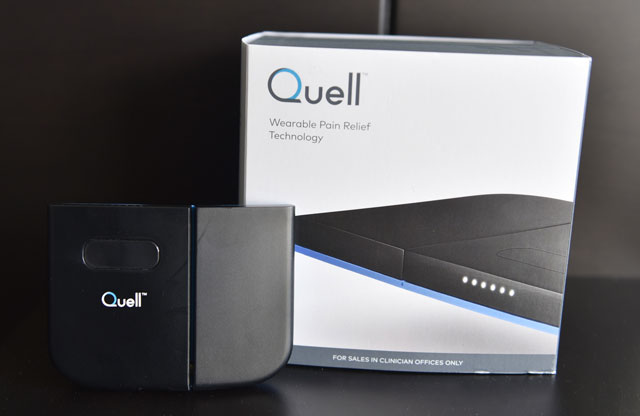
Being “drug-free” usually references illegal substance abuse, but prescriptions for chronic pain can lead to damaging dependency as well. For those eager to try a pain reliever that doesn’t require popping pills, wearable technology and neuroscience may have an answer.
NeuroMetrix claims to have found a workable solution that could apply to anyone dealing with chronic pain from illness, injuries or disability. The Quell ($249 on Amazon) is a device that you wear on your calf, but treats pain anywhere—your back, shoulder, knee—using electro-stimulation to provide relief through the body’s own internal painkillers.
On its base premise alone, you could be forgiven for viewing this as pie in the sky out of an infomercial, but there is evidence to back it up, and the Food and Drug Administration (FDA) has approved it through the 510(k) process as a Class II Medical Device for chronic pain relief. Where it’s placed also makes it easy to discount Quell’s ability to provide relief. But that too is based in science.
The upper calf holds a number of different nerve endings that traverse the body. The technology in the Quell makes it a Transcutaneous Electrical Nerve Stimulation (TENS) unit because it essentially sends pulses through that area and up the spinal cord, triggering the brain to raise endorphins. This prevents or reduces pain signals from reaching the brain, while releasing opioids to relieve pain in the process.
Opioids are the key here. Medical research going back to the 1960s experimented with high frequency peripheral nerve stimulation to gauge how they can respond and elevate natural pain modulating chemicals in the cerebrospinal fluid (CSF). Without getting into too much medical terminology, hydrocodone, meperidine and oxycodone are prescription opioids that can do the same thing, except they do so through a different receptor in the body than electro-stimulation does. The results may be similar, but the path to get there isn’t necessarily the same, according to a whitepaper written by Dr. Shai Gozani, founder and CEO at NeuroMetrix.
In other words, the pills could have side-effects, while the Quell shouldn’t.
As opioid levels increase, they stick around for about 40 minutes after the stimulation ceases. This is why the Quell stimulates for one hour, and then automatically turns off on its own for another hour, before turning back on again. The on-off process allows the opioids to keep working until they go back to baseline levels, avoiding overstimulation.
While there are other over-the-counter TENS units available, like the Icy Hot line, none of the others are designed for chronic pain and all-day wear, including while sleeping. And, none of the others qualify for insurance reimbursement.
Using Quell
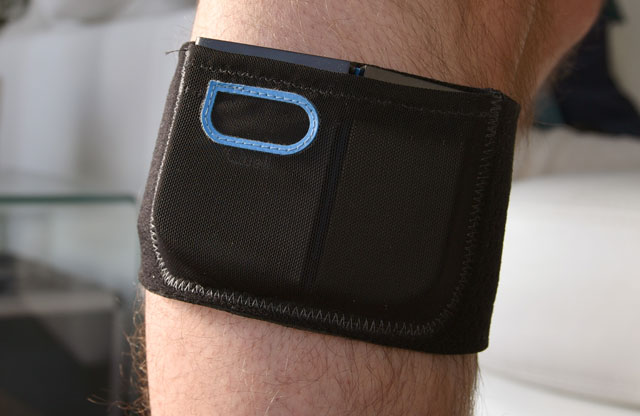
Getting set up and started is a breeze. The flexible sports band includes a holster for the device, which also has an open slit on either side — one for the power button, the other revealing two clips. The latter are meant to attach to a strip of gels that adhere to the skin, holding it all in place, while also pushing through the electric pulses the device generates.
The strap has to be worn on the upper calf (left or right, doesn’t matter), and go through a quick calibration process consisting of holding the power button for five seconds each time to increase pulse strength to a comfortable level of tolerance that doesn’t feel like being shocked. You should feel it work, though feel relaxed at the same time.
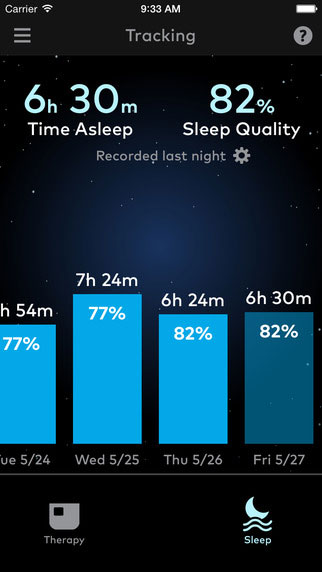 It’s designed to be worn anytime you need the relief, which can vary from all times of the day to instances where pain may be more prominent. This also includes during sleep, and the device has been optimized to recognize the wearer is in a slumber when the user sets it manually on the free Quell iOS or Android app, or reduces pulse strength to a gentler mode that isn’t distracting by pressing the button on the side. Wearing it during sleep is somewhat of a novelty, considering NeuroMetrix is currently the only company to have a TENS device available over the counter that is cleared for use while asleep.
It’s designed to be worn anytime you need the relief, which can vary from all times of the day to instances where pain may be more prominent. This also includes during sleep, and the device has been optimized to recognize the wearer is in a slumber when the user sets it manually on the free Quell iOS or Android app, or reduces pulse strength to a gentler mode that isn’t distracting by pressing the button on the side. Wearing it during sleep is somewhat of a novelty, considering NeuroMetrix is currently the only company to have a TENS device available over the counter that is cleared for use while asleep.
Neither waterproof nor especially sweatproof, there’s something of a fine line when and where the Quell can be used during activity. Marketing materials and images show a runner and golfer, and those two activities probably could work, given that the device can excel in more passive sports and activities — of which there are many. Golf, table tennis, rollerblading, hiking, brisk walking, bike riding, billiards and driving, among others.
Even in the gym, the bike, elliptical, treadmill and other machines should be fine. It is possible to wear the Quell during a gym workout, but I personally found it to be distracting. For example, leg exercises can feel a little off if the Quell is pulsing at the same time. Upper body exercises are generally fine, though I personally opted not to wear it during heavy cardio activity.
Activities that probably wouldn’t work, either because of equipment or environment, would be ice hockey, beach volleyball, football or almost any other sport where diving, water or physical contact is going to happen. The device doesn’t have any serious protection and isn’t ruggedized to withstand punishment.
Note that people with a cardiac pacemaker, implanted defibrillator or other implanted metallic or electronic device are best served to consult with their doctor first before using the device
Does Quell work?
I’ve battled tendinitis in both knees in the past, and have a hip flexor issue that sometimes leads to pain and discomfort. Both problems made me a good candidate to discover what kind of pain relief could be achieved from this device.
In my case, I’ve worn the device since January. It took three days before I started feeling a positive effect, yet took weeks before a lasting impact left an impression on me. NeuroMetrix recommends four-to-six hours “for the first several weeks,” which I would agree with. I wore it all the time, regardless of whether I was home or out at a social gathering. I even traveled with it. Under a pair of jeans or pants, the device was pretty inconspicuous.
The Quell soon faded into the background, to the point where I neither noticed the pulses nor the pain unless I strained or twisted my body too much. It never woke me up from sleep and the gel strips held up well, though I never used them during rigorous workouts.
The company says that some users may experience skin irritation. Other than a little itchiness at the start, I experienced nothing like that.
One thing that’s difficult to assess when testing a product like Quell is how it might impact someone else. A review on Forbes from someone with myofascial pain syndrome found it lessened her pain. Know that the device is inherently subjective because the wearer’s body reacts to it at different intensities. By no means, is it a cure for chronic pain, only a medication-free substitute that can do away with prescriptions to painkillers.
That being said, the Quell isn’t going to do anything for chronic headaches and migraines because they occur in a different area of the brain. Debilitating injuries that are really severe, like fractures, cracked ribs or torn tendons may not benefit from the Quell’s pulses, but you should consult a doctor before using the device, in any case.
This is why NeuroMetrix seems to try not promising too much, noting that the Quell is well-suited for those suffering from sciatica pain, fibromyalgia, diabetic neuropathy and osteoarthritis. All of those are chronic musculoskeletal conditions that require regular maintenance, which is what the device is designed for. Standard and temporary aches and pains from tough games or workouts can be lessened with it, but that’s not the main purpose.
Battery life
Battery life is rated at about 30-40 hours, which is mostly accurate, as the number is affected by how intense the pulses are. I easily went a full 36 hours using it before needing to recharge the unit (which takes about two hours to recharge), but found that I had to take it off every few hours or so to let my skin breathe in my upper calf.
The Quell app
The free Quell app isn’t required to operate the device, but exists as a way to learn how to use the device and track progress over a current therapy session or over the course of a day. Manual controls are limited, except it is possible to set the device to Full Power, Bedtime Only or Gentle Overnight. Bedtime Only limits therapy only to when falling asleep. The setting only applies, however, to when the device itself is on Auto-Restart (which it is by default), meaning that a new 60-minute cycle begins every second hour.
Beyond that, you can use the app to note when you replaced the electrode strips, and then get a notification on your phone that they are due for replacement later on. The app is helpful for troubleshooting Bluetooth pairing issues and offers a direct link to purchase new strips from the company website.
Paying for Quell
At $250 to start (it comes with two strips in the box), the Quell isn’t inexpensive, yet isn’t priced out of reach, either. Despite clearance from the FDA to sell the Quell without a prescription, the company concedes most insurance companies will not cover the cost directly. Instead, it encourages prospective buyers to contact their insurer to find out for sure. For those enrolled in either the Flexible Spending Account (FSA) or Health Savings Account (HSA) programs, the device is entirely eligible for reimbursement. There is a 60-day money back guarantee in case you come away feeling like it did nothing for you.
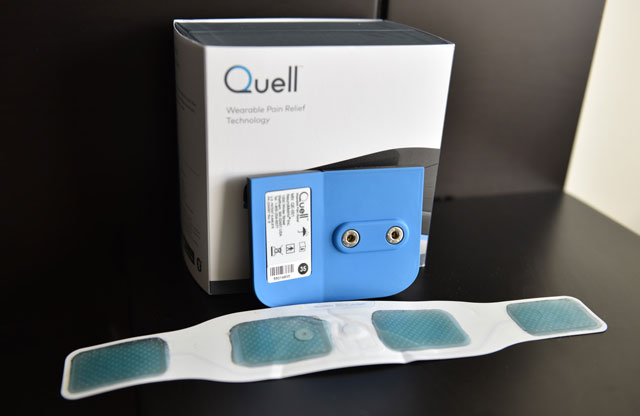
The gel strips are where NeuroMetrix ultimately derives its earnings. At $30 for a pair (or $29.95 on Amazon), each of which last two weeks upon daily usage, the Quell effectively becomes a monthly expense for the regular wearer. Readily available through the company website or Amazon, users can save a little money buying larger packs that include more strips at a reduced price.
It’s the residual cost that has to be measured because, assuming that it’s to be worn daily, that’s another $30 per month. If prescriptions are costing more than that, there may be a savings to consider here, both in monetary and health terms.
The bottom line
Wearable technology may still be unproven, in many respects, but the Quell bucked the trend, showing me that it was anything but snake oil. It shouldn’t be misconstrued as a replacement for physiotherapy and other treatments that can reverse chronic pain or injury, but when it comes to management, this is one device that can make a difference.
While skeptical at first, I’ve since come away feeling like it worked for me. I know not to shirk my exercise and rehab routine, but at least the Quell helps in between when I could use some relief. It is worth a try if you find yourself in the same position.
Quell Wearable Pain Relief Device
[Image credits: Ted Kritsonis/Techlicious, Quell]
Discussion 
can quell be used if you have a pacemaker? i know the pacemaker warning for tens unit. would this turn off my pacemaker?
Just a word of warning. If you feel a sharp sensation, unlike the typical tens feeling, remove the unit. I developed small blisters, where the blue gel was.Didn’t notice them at first. They soon blossomed into sores, which where severely painful and itched like no tomorrow. As I rotated the strap around, not realizing the magnitude of what was going on my legs, this was a mess. Ve careful.
Can you use this if you have dental implants?
There should not be any issue with using Quell with dental implants. However, you should consult with your doctor first.
Would it help with Restless Leg Syndrome?
I don’t believe that TENS devices have been FDA approved for treating Restless Leg Syndrome. You should have a conversation with your physician about treatment using the Quell or similar units.
This was a game changer for me and my restless leg syndrome. I cannot believe how many years I have suffered with this condition only to find this amazing little machine. It stopped the sensation almost immediately….and for me, the frequency of my restless legs has decreased. A bit of an investment at first but so worth it. I had to call with a small issue 5 years after I purchased it (yes I have been using it that long)and their customer service or should I say support was phenomenal! What a wonderful company. Do not hesitate to purchase this unit.
I have a sciatica and lower spine problems. I’ve also been diagnosed with degenerative bone disease in my spine with arthritis. I have also had many surgeries on shoulders,wrist,knee,abdomen,wrist and breast cancer. Yes I am a walking medical disaster. I currently have a problem with my foot so hence the reason I am seeking relief from pain. I live with pain 24/7,disturbed sleep,cold makes it all ache worse and winter is upon me. Seen the commercial for this after just having my spinal in which I have every 9 weeks for the last 5 years. I was wondering if this would help me, since nothing I have done is permanent but only temporary. Can anyone give me some evidence that its helped someone like myself?
I suffered nerve damage from an electrical injury 7 years ago, and most of my neurological symptoms had dissipated prior to trying this device. A few days after one 50 minute session, I started experiencing burning pain through out my body, Raynaud’s syndrome, fasculations all over (including face and tongue), and am additionally suffering from post-concussion syndrome (on week 2 now) as a result. On Quell website, others left reviews stating their nerve pain became worse after trying the device. If you do decide to try, tread carefully.
I have horrible nerve pain from a botched operation. I was considering this product but sfter reading your note, i would not chance it. Thsnks so much.
Since most long term chronic pain sufferers usually develop anxiety and depression, I am wondering if the endorphin stimulation would help. Pain reduction could help with that nagging feeling of “Am I going to be in pain the rest of my life and have nothing to look forward to?” Comment please, if there has been any research done in this area.
thx
paul
Only being 53 my chronic pain. Arthritis, Fybromyalgia, Knee pain (4 surgeries) and other healhh issues, including heart conditions have been with me for years.
CAN QUELL BE USED WITH A PACEMAKER, that is only an “on demand”....(only turns on when heart rate is too slow.
This is a very serious question, I’d surely appreciate a quick reply.
Thank You,
Karen Norman
Only being 53 years young, my chronic pain. Arthritis, Fybromyalgia, Knee pain (4 surgeries) and other healhh issues, including heart conditions have given me for years.
CAN QUELL BE USED WITH A PACEMAKER, that is only an “on demand”....(only turns on when heart rate is too slow.
This is a very serious question,
I’d surely appreciate a quick reply.
Thank You,
Karen Norman
According to the American Heart Association, “Most studies have shown that TENS rarely inhibits bipolar pacing. It may sometimes briefly inhibit unipolar pacing. This can be treated by reprogramming the pulse generator.”
http://www.heart.org/HEARTORG/Conditions/Arrhythmia/PreventionTreatmentofArrhythmia/Devices-that-may-Interfere-with-Pacemakers_UCM_302013_Article.jsp#
However, we are not medical professionals and each person’s situation may be different. Therefore, it is best to talk to your doctor about whether using TENS would be safe for you.
My dog suffers hip pain. I wonder if consideration is in the making for animals to be fitted for the device.
I’m wondering if they would rate Fisher Wallace simulator or it’s competitor, I’ve got the Fisher Wallace easy to use but I’m terrible with habits that ate multiple steps.(I’ve got MPS with severe night bruxism)
I too have terrible bruxism. They’ve recently discovered that 80% of people with Bruxism actually have it caused by sleep apnea. Once this is treated, the bruxism dissipates. You might be part of that group.
What about neck pain? Would it help that? And range of motion?
There can be many causes of neck pain, and we don’t want to provide medical advice that could be incorrect. It would be best to speak with your doctor about your specific situation and whether a TENS unit would be helpful.
When I had a hip replacement I ended up with a dropped foot. Mt sciatic nerve was affected, so from my knee down to my toes I really had no feeling.
It’s been three years and I’m starting to get more movement. Just curious, has the company done any experiments with this problem?
I appreciate your response.
Jean A.
We’re not in a position to answer medical questions related to specific issues and treatments. It’s best to check with your doctor whether TENS devices have been tested with restoring sciatic nerve damage.
Will it interfer in anyway with an insulin pump?
I don’t see how this would interfere with your insulin pump, but this is a question best asked of your doctor as we’re not in a position to provide specific medical advice.
Hurt my shoulder whre do I put the Quell? on my calf
or on my shoulder?
The way Quell (and other TENS devices) work is by stimulating sensory nerves. These nerves carry signals to your brain that then trigger your natural pain relief response. So you always wear Quell on your calf, but it can help manage pain throughout your body.
/the quell has been wonderful but I can’t seem to get it to charge all of a sudden. ANY EXPERIENCE OUT THERE?
I am bone on bone on my left knee with some outward bowing and have significant arthritis in both knees. As a result, driving sleeping are problems. I cannot walk more than about 50 yards w/o significant pain. Could Quell help? If so, could Quell give a false sense of well being i.e., could my pain be reduced so much that I would tend to overdue and increase my pain as a result.
Quell can help with reducing pain form arthritis. And if the pain is impacting your sleep and ability to function, that sounds like a good thing. Whether you need to manage your activity to ensure that you do not further damage your knee is a discussion you should have with your orthopedist.
Does Quell offer hypoallergenic electrodes or other options for patients with skin sensitivities?
The Quell electrodes are a maylar substrate with silver electrode pads. There is no other option as the electrodes are specifically manufactured and tested for this purpose. According to Quell, the hydrogel used with the electrodes consists primarily of water, salt glycerin and a dimethylacrylamide-based polymer matrix. The hydrogel does not contain latex, BPA or phthalates
I am developing small blisters in my sking why is this
It’s important to give your skin time to air out, so Quell recommends switching legs on a regular basis during prolonged use. For more details on how often you should switch your Quell, you can call Quell customer support at 800-204-6577.
How Effective is the Quell with Arthritis?
As a general pain dampener, the Quell will work with arthritis pain. However, every situation is different, so Quell offers a 60-day return guarantee if it isn’t working for your needs.
I had a spinal neuro stimulator removed 6 years ago. The magnets and leads were left in my back. Can I use the Quell with implanted magnets?
The nerve stimulation technology used by Quell shouldn’t be impacted by magnets in your back or vice versa. However, as I always need to point out, I am not a physician and you should talk to your doctor about any specific conditions that may concern you. Or you can call Quell customer support at 800-204-6577 and they may be able to provide a more definitive answer.
how do i know if i have to charge it and ho long. i pressed it and one light only. i charge it and there was five. i am afraid it might be overcharge
i just received the quell yesterday
According to Quell, it should take 2-3 hours to fully charge. After charging is complete, all the lights on the device will go out. You should take it off the charger once done, but the battery shouldn’t be able to overcharge. So don’t worry if you leave it on longer.
There are alternatives to “quell” that are about 1/5 the cost and eletrodes are 1/30 the cost. Such as “Ireliev”. available from Amazon.
When I got my Quell I was in heaven. I was pain free for the first time in 6 yrs and able to engage in activites that had been denied me. Then they changed the gel strips and I am Highly alergic so that now I have a reaction which limits my use of the Quell to Twice a week so that my legs can heal between use. Nothing is different other than the gel strips. Contacted Quell and they suggested alcohol wipes before use. Didn’t help. So disappointed because it helped me so much.
I am extemely sensitive to the gel on the pads. I purchased adapters from Amazon and am using the pads from my TENS unit and it is working fine. No more problems.
It causes pulsing pain in my left foot toes left side and right foot toes right side. It usually happens once a month for about three days. Would this is viable product for my case?
Some users of Quell have reported relief for sciatica pains. Since every case is different, you may want to give it a try and see how it works for you, and there is always the money-back guarantee. Let us know what results you get.
Can Quell help with the pain from Shingles or Post Herpetic Nerve pain?
There are studies that show TENS devices can help reduce shingles and post-herpetic nerve pain (https://www.ncbi.nlm.nih.gov/pubmed/25600258), as well as anecdotal evidence of pain relief. However, they don’t work for everyone. So best to give it a try and if you’re not seeing results return the device.
Read More Comments: 1 2

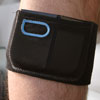















From Danny Kinder on October 17, 2016 :: 4:01 pm
Since I received my quell I am almost 2 months pain free from fibromyaliga. I recommend it to my daughters mother-law and she bought her one. Really helped her fibromyaliga. She was at work and quell come loose and she lost it and don’t have the money rite now to buy another one. Since that happen to her I got anot her piece of velcro that goes around the quell. Mine had came loose several times but now extra piece of velcro holds it firm in place
Reply
From Josh Kirschner on October 19, 2016 :: 12:12 pm
It’s always helpful to hear from additional users on their experience with the products. Have you tried contactin Quell customer service to see if they would offer a fix or replacement for the velcro issue?
Reply
From Lori on September 02, 2017 :: 11:55 pm
As the above customer stated I am also having issue with mine coming off. I’ve only had it 6 days and the band seems to have stretched out. I have small calfs and it wraps back on its self. The Velcro comes undone and it slips down my leg. No matter how tight I put it on. Also the connections come undone at the slightest touch of the unit against anything. Every time I get out of a vehicle they dissconnecf. It’s impossible to cross my legs or they disconnect. I’m a small person so it’s not due to my legs being big. I LOVE how effective it is. I have lived in constant chronic pain for years & this unit is a god send. I wish it was a higher quality for the cost. Also the electrodes shouldn’t be 25.00$ each. I have Tens unit and I can’t see why these are so costly. I will pay for them to get the relief without Meds. But I know you are taking advantage of people in pain and providing a substandard product. This has so much potential to help so many & be so much better than it it. Yet you CHOOSE to make it as cheap as possible to make more $$$ instead to slightly lowering your profit margins & provid a quality product you make that extra buck and sell us working junk. How about you rethink that. Maybe even raise the price the unit by 25$, increase the quality by 100% and lower the price of the electrodes by 100%.
A satisfied dissasified customer.
Reply